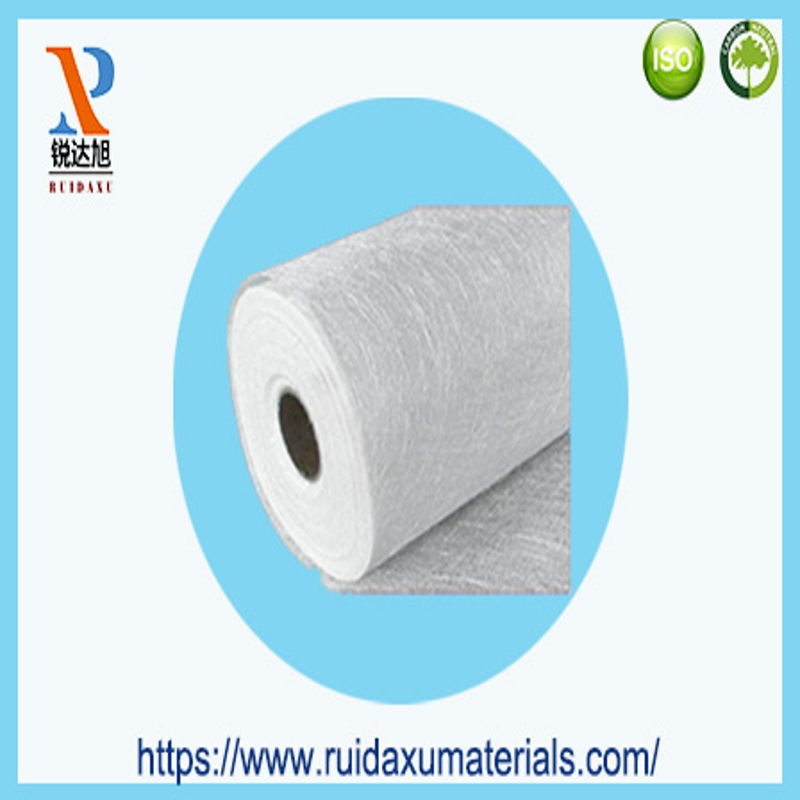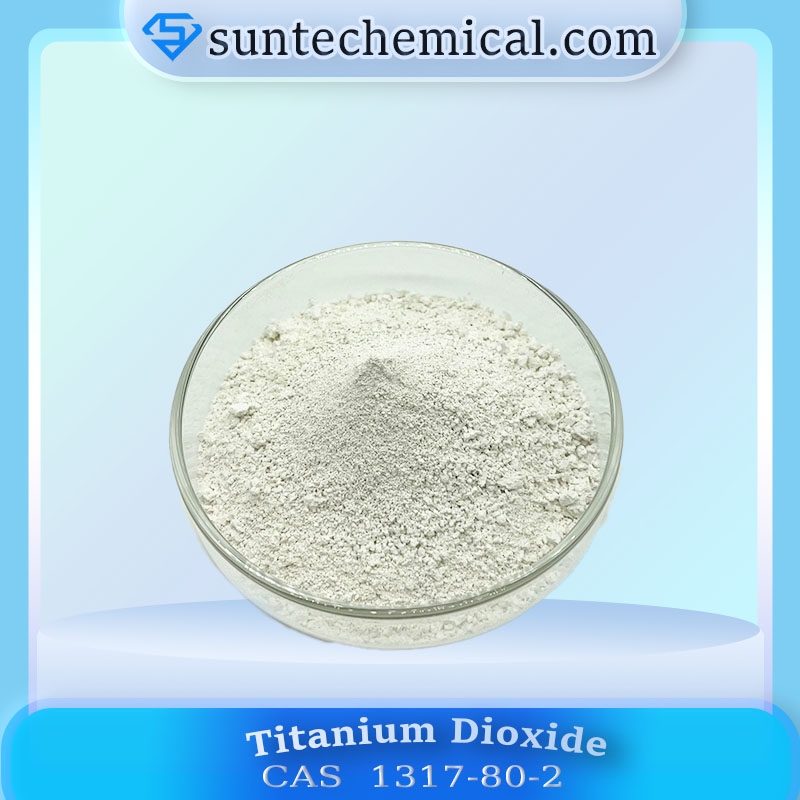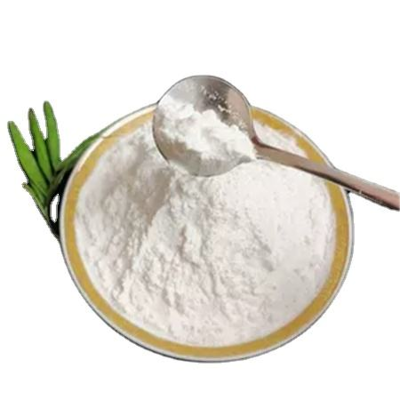The turbidity method determines the dispersion of titanium dioxide.
-
Last Update: 2020-09-23
-
Source: Internet
-
Author: User
Search more information of high quality chemicals, good prices and reliable suppliers, visit
www.echemi.com
0 Introduction . Titanium dioxide is widely used in coatings, plastics, papermaking, printing inks, chemical fibers and rubber industries with its unique physical and chemical properties, while ultra-fine titanium dioxide has excellent optical, electrical and electrical properties and is of high application value in advanced coatings, plastics, papermaking and certain electronic materials. The further correction of titanium white powder makes it a conductive functional filler, which is applied to polymer materials (including conductive coatings), so that polymer materials have conductive, anti-static, shielding electromagnetic waves and other functions of anti-static agents, electromagnetic shielding coatings or surface heating bodies. For its preparation and application, the domestic is just in its infancy, but foreign countries attach great importance to, especially in Japan has achieved industrialization. This is mainly because compared with traditional conductive and anti-static materials, conductive titanium dioxide has obvious advantages, especially with the rapid development of the information industry, the demand against electrostectrical and electromagnetic shielding coatings has increased dramatically, so that conductive titanium white powder has a broad market prospects.
Because TiO2 particles are larger than the surface area and have higher surface energy, the particles are in a very unstable state, which can easily be reunited in the preparation and post-treatment process to form larger particles, thus directly affecting the quality and performance of the product. Therefore, in a sense, TiO2's decentralized stability has become a key factor in its application. Because the dispersion of TiO2 particles in the liquid phase is affected by many factors, such as: type of dispersion medium, mechanical stirring time, pH of solution, dispersion selection, dispersion temperature and dispersion time. Therefore, it is of great significance to study these factors for the application of TiO2.At present, there are difference microscope or electron microscope observation, photography, zeta position test method, both methods are carried out under experimental conditions, the test instruments and the environment have higher requirements, and the operation is more complex. In addition, more gravity subsidon drying method is used, which takes a long time, has a large human error and has poor result reproducibleness. Therefore, under the general conditions, the rapid and accurate testing of titanium dioxide turbidity is also the main problem discussed in this paper.1 Testexperimental scheme is to prepare the active silicate sol as a dispersant, and at the same time by adjusting the acidity and alkalinity of the dispersant, in order to achieve the dispersion effect of titanium dioxide in different acid-alkali environment.1. 1 Experimental PrincipleBy controlling the amount of sodium silicate and acid, the resulting active silicate sol is absorbed by TiO2's hydroxyl acid, forming the Ti-O-Si bond; SiO2 clad TiO2 particles: sol , adsorption , gel , film. The process is first a rapid physical adsorption of the sol, then a slow film-forming phase, and finally the silicon gel relies on coulomb force and heterogeneous nucleation over ionization. SiO2 is firmly bonded to the surface of TiO2 in hydroxyl form, it is not a simple physical cladding, but a chemical bond. This cladding significantly reduces its interface strength, increases the stability and durability of the paddle fluid, changes the wetting and adhesion characteristics of the powder, and improves the dispersal behavior of titanium dioxide in the substation, thus improving the interface binding between the powder and the substation. Because the suspended particles in the liquid cause the scattering of light, the intensity of scattered light is related to turbidity, so the measurement of scattered light intensity can obtain turbidity information. The stronger the scattered light, the more suspended particles there are, so the greater the turbidity value. For the same sample, the dispersion system of volume, concentration, dispersion medium and different dispersants, if the greater the turbidity value, the more stable the dispersion system, the better the dispersion effect.1. 2 Reagents and instruments 1. 2. 1 Reagent Zero turbidity water (homemade), 400 turbidity water, deionized water, extensive pH test paper, ultra-fine titanium white powder, silicon dioxide powder, sodium hydroxide (analysis pure, mass score is not less than 99. 5%) and hydrochloric acid (content 36% to 38%).1. 2. 2 Instrument SGZ-2P type number turbidity meter, sample sample bottle, electronic balance, medicine spoon, oven, surface dish, berration, glass rod, test tube, test tube brush, dropper, filter, water bottle, large mouth bottle, pipe pipe, filter paper.1. 3 Experimental steps 1. 3. 1 Pre-experiment preparation (1) preparation correction with zero turbidity water. With reference to the method specified in the international standard ISO7027, the aperture is selected to be 0. 1 sm (or 0. Micro-porous membrane filter distilled water, repeatedly filtered more than 2 times, this experiment filtered 5 times, the resulting filter liquid is the zero turbidity water used for inspection. The water is stored in a clean glass bottle and rinsed with the water. (2) Turn on the power switch behind the SGZ-2P turbidity meter and preheat 30min. (3) Use the above-mentioned correction with zero turbidity water and 400 turbidity water correction turbidity meter. (4) Take 0. 10g titanium white powder, put in the oven for drying, 15min after removal. After cooling for a moment, pour into the beech, add distilled water to 40mL, stir well with a glass stick, set aside 20min, then take the upper liquid, put in the turbidity meter, after the reading is stable, record the turbidity value.1. 3. 2 Preparation of sodium silicate solution (1) called take 0. 15g silica powder and 0. 20g sodium hydroxide, dissolved in the beech, diluted and fully reacted, rested, clarified, with a pipet to transfer the resulting supernatant (sodium silicate solution) into the test tube. The reaction is shown in the style (1).siO2 plus 2NaOH to Na2SiO3 plus H2O (1)(2) to prepare active silicate sol. Take the appropriate amount of hydrochloric acid with another test tube, add the above sodium silicate solution to hydrochloric acid one by one, add edge oscillating test tube, and use extensive pH test paper to determine the pH value of the result, pH value is greater than 9. 0 (set here at 10. 0) Stop dripping into the sodium silicate solution. The reaction is shown in the same way (2), (3).Na2SiO3 plus 2HCl, H2SiO3, 2NaCl (2)or Na2SiO3 plus 2HCl plus (n-1) H2O, SiO2, nH2O, 2NaCl (3)(3) also called 0. 10g conductive titanium white powder, baked in the oven 15min, cooled for a moment and poured into the beech, the above-mentioned silicone sol transferred in, diluted with distilled water to 40mL, stirred with a glass rod to be tested.1. 3. 3 Measurement data Repeat step (2) first, with a pH of 11. 0,12. 0,13. 0,14. Stop dripping into the sodium silicate solution at 0. Then repeat step (3), sample the sample bottle, put in the turbidity meter to determine its turbidity value, to be recorded after the reading is stable, the turbidity value of the suspension liquid at this time. 2 Results and Discussions 2. 1 Experimental data Under experimental conditions with a temperature of 20 degrees C and a relative humidity of 53%, the turbidity value of the titanium dioxide suspension with different pH values was tested, and the experimental results were found in Table 1. 2. 2 Analysis and discussion 2. 2. 1 Inorance surface change According to the relationship between turbidity value and dispersion, the dispersion of conductive titanium dioxide after treatment (inoranced surface correction) is significantly improved compared to the dispersion stability of untreated conductive titanium white powder. When the pH value is about 11, the turbidity value is the largest, at this time the dispersion stability of the dispersion system is the best. This is because the silicon envelope forms a uniform dense, a fixed-shaped hydrated silicon oxide film by generating "active silicon". When Na2SiO3 was acidified, si (OH) 4. Si (OH) 4 in the monosome form is highly active and quickly produces polymerized silicones in the sioxane chain. Active silicon refers to monomer and low polymerization of hydrated silicon oxide, while polymers with high molecular weight are inactive. The characteristics of this film are: first, the film thickness is basically uniform, the structure is dense, is continuous, not porous sponge-like, and second, silicon oxide in the form of hydroxyl firmly combined to the surface of titanium dioxide. The particles between silicon dioxide and titanium dioxide are combined with Si - O - Ti. Inorgic surface correction is the deposition of inorgic compounds or metals on their surface by certain means, forming cladding, or forming nuclear-shell composite particles to improve surface performance.
2. 2. 2 Effect of acidity and alkalinity The turbidity value is increasing with the increase of pH value in Table 1, reaching the maximum value at 11, and then continuing to increase the pH value, the turbidity value will gradually decrease, and when approaching 14 the turbidity value reaches the minimum. At pH- 11. At 0, the turbidity value reaches a peak, indicating that the conductive titanium dioxide at this time is at pH.11. Dispersion stability in the active silicate sol of 0 achieved the best results, while pH was 12. 0, pH - 13. 0 and pH . . . 14. At 0, the turbidity value drops sharply, indicating that the dispersion effect is worse, and the greater the pH (the stronger the alkalinity), the smaller the turbidity value. This is because the surface of the powder is mainly affected by mutually exclusive electrostitive repulsion and mutual attraction of the role of Van der Worrh, when the electrostitive repulsion is much greater than Van der Worrh, dispersion is good, otherwise dispersion is very poor. The pH is a double-charge layer formed by changing the positive and negative charge on the surface of the titanium dioxide particles, which can be thought of as particles surrounded by the same charge, when the pH changes, the charge concentration changes, the charge produces a rebuke force, when the rebuke force is greater than Van der Hua's gravity, the particles will be separated and the system is in a dispersed and stable state. 2. 2. 3 Anti-static performance of titanium dioxide with ATO coating TiO2 obtained ATO/TiO2 conductive powder, can have both ATO and TiO2 advantages: both a certain degree of conductivity, light color, can absorb ultraviolet light, but also has good weather resistance and high temperature performance. ATO, ATO/TiO2 powder as a new type of functional conductive materials, mainly in the form of additives used in a variety of materials, for the preparation of a variety of colors of permanent conductive, electromagnetic shielding and anti-static materials, such as conductive coatings, conductive adhesives (adhesives), conductive plastics, conductive rubber, conductive ceramics, conductive cement, conductive inks, conductive fibers and other conductive products.
solvent used above is distilled water, the experimental results show that when using waterless ethanol as a solvent, repeat the experimental steps (4), conductive titanium white powder suspension turbidity value is much greater than 5. 60, indicating that when waterless ethanol is used as a solvent, the dispersion system of conductive titanium white powder suspension is much more stable and more dispersive than in distilled water. Ti-O imbalance makes TiO2 polarity is very strong, surface adsorption of water due to polarization and dissocation, easy to form hydroxyl. TiO2 particles have a larger surface area and more hydroxyl on the surface. The presence of hydroxyl can improve the polarity of TiO2 as an adsorbent and various carriers, and provide convenience for surface change. Although TiO2 nature is hydrophobic, the modified is the use of certain chemicals through certain process methods to make it react with the surface of TiO2 hydroxyl reaction, eliminate or reduce the amount of surface alcohol hydroxyl, branching or coating other chemicals, so that the product from hydrophobic to hydrophobic, in order to change the surface properties. In addition, the modified titanium dioxide has oil-affinity, which provides an important method for the multi-functional modified of various polymer materials, which provides a theoretical basis for the development of anti-static multi-functional polymer materials. 3 Conclusion The turbidity method is simple to operate, easy to master, the test range is wide and the accuracy is high, and the turbidity value can be indicated by the dispersion of titanium dioxide in the medium. By measuring the turbidity of titanium dioxide in the medium after surface correction, it is found that the dispersion of titanium white powder in the medium is greatly improved. In addition, the further modified titanium dioxide can be used as a multi-functional additive in the polymer substitin, so as to achieve the control of color, anti-electromagnetic radiation, anti-static and other multi-functional composite materials. .
This article is an English version of an article which is originally in the Chinese language on echemi.com and is provided for information purposes only.
This website makes no representation or warranty of any kind, either expressed or implied, as to the accuracy, completeness ownership or reliability of
the article or any translations thereof. If you have any concerns or complaints relating to the article, please send an email, providing a detailed
description of the concern or complaint, to
service@echemi.com. A staff member will contact you within 5 working days. Once verified, infringing content
will be removed immediately.







